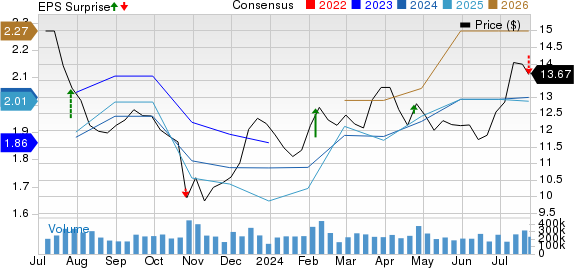Microsoft's capital transformation has been characterized by remarkable growth, leading to a series of noteworthy accomplishments. This article provides a comprehensive examination of Microsoft's capital structure, emphasizing the significant changes in equity and debt capital, financial leverage, and enterprise value.
In recent years, Microsoft has witnessed substantial growth in shareholders equity, with an increase from $72.4 billion in 2016 to $102.3 billion in 2019. Concurrently, the company's long-term debt has also experienced a notable rise, escalating from $17.9 billion in 2015 to $32.5 billion in 2019.
Furthermore, Microsoft's enterprise value has seen a remarkable surge, growing from $705 billion in June 2018 to almost $1.5 trillion in June 2020. These figures reflect the market's recognition of the company's strong performance and future potential.
By analyzing Microsoft's capital transformation, investors and industry observers can gain valuable insights into the company's financial strength and overall value.
Key Takeaways
- Microsoft's shareholders equity has experienced significant growth, increasing from $72.4 billion in 2016 to $102.3 billion in 2019.
- The long-term debt of Microsoft has also increased, rising from $17.9 billion in 2015 to $32.5 billion in 2019.
- Microsoft's enterprise value has seen remarkable growth, soaring from $705 billion in June 2018 to nearly $1.5 trillion in June 2020.
- The reduction in short-term debt and declining use of leverage indicate Microsoft's management is reducing its reliance on debt capital.
Equity Capital Transformation
Microsoft's equity capital has undergone a significant transformation, driving unprecedented growth for the company. Through equity financing, Microsoft has been able to generate funds by selling ownership shares to investors. This has allowed the company to raise capital without taking on additional debt.
In recent years, Microsoft has also focused on debt reduction, reducing its reliance on borrowed funds. By reducing debt, Microsoft has improved its financial leverage ratio, which measures the proportion of debt to equity capital. This reduction in leverage indicates a more conservative approach to capital structure and a decreased risk for the company.
Debt Capital Evolution
Continuing the discussion from the previous subtopic of equity capital transformation, the evolution of debt capital has also played a significant role in Microsoft's capital transformation.
Debt capital management has been crucial in shaping the company's financial structure and enabling its unprecedented growth. Microsoft's long-term debt has seen a notable impact on its capital transformation.
From 2015 to 2019, long-term debt increased from $17.9 billion to $32.5 billion. This increase can be attributed to strategic acquisitions like LinkedIn in 2016.
However, it is worth noting that Microsoft has significantly reduced its short-term debt over the past three years.
The management's focus on reducing reliance on debt capital is evident in the declining debt-to-capital ratio, which was 7.8% in June 2019, down from 10.5% in June 2018 and 13.9% in June 2017.
This reflects the company's prudent debt management strategy and its commitment to maintaining a strong financial position.
Financial Leverage Analysis
The analysis of financial leverage in Microsoft's capital transformation reveals key insights into the company's debt management strategy and its impact on overall growth.
One important aspect is the impact of debt reduction on financial leverage. Microsoft has been actively reducing its reliance on debt capital, as evidenced by the declining debt-to-capital ratio over the past few years. This reduction in debt has allowed the company to lower its financial risk and enhance its financial flexibility.
Comparing Microsoft's financial leverage to industry peers is another crucial aspect. Microsoft's conservative approach to debt management has positioned it favorably compared to its peers, as it has maintained a lower debt-to-capital ratio. This indicates that Microsoft is effectively managing its debt levels and maintaining a strong balance sheet, which contributes to its unprecedented growth.
Enterprise Value Expansion
During its capital transformation, Microsoft experienced significant expansion in its enterprise value.
The enterprise value of a company is a measure of its total worth, taking into account the market values of its equity and debt, and subtracting cash and investments.
Microsoft's enterprise value grew from $705 billion in June 2018 to almost $1.5 trillion in June 2020.
This expansion can primarily be attributed to market value appreciation of Microsoft's equity, which was driven by various enterprise value drivers such as strong financial performance, strategic acquisitions, and market confidence in the company's future prospects.
The increase in enterprise value showcases the impressive growth and value creation that Microsoft has achieved during its capital transformation, solidifying its position as one of the most valuable companies in the world.
Key Takeaways on Microsoft's Growth
One notable takeaway from Microsoft's growth is its remarkable increase in enterprise value over the past few years. Microsoft's enterprise value grew from $705 billion in June 2018 to almost $1.5 trillion in June 2020. This significant increase reflects the market's recognition of Microsoft's profitability and strong performance.
Additionally, Microsoft's key financial metrics, such as shareholders' equity and long-term debt, also demonstrate its growth trajectory. Shareholders' equity increased from $72.4 billion in 2016 to $102.3 billion in 2019, indicating a solid capital structure. On the other hand, long-term debt increased from $17.9 billion in 2015 to $32.5 billion in 2019, which could be attributed to strategic acquisitions such as LinkedIn.
Frequently Asked Questions
What Factors Have Contributed to the Increase in Microsoft's Shareholders Equity From 2016 to 2019?
The increase in Microsoft's shareholders equity from 2016 to 2019 can be attributed to factors such as net profits attributable to equity holders, financing from the sale of equity, and balance sheet items like retained earnings and additional paid-in capital.
How Has the Acquisition of Linkedin in 2016 Impacted Microsoft's Long-Term Debt?
The acquisition of LinkedIn in 2016 impacted Microsoft's long-term debt by increasing it from $17.9 billion in 2015 to $32.5 billion in 2019. This has implications for the company's cash flow and long-term financial stability.
What Is the Significance of Microsoft's Declining Use of Leverage in Terms of Its Reliance on Debt Capital?
The declining use of leverage by Microsoft signifies a reduced reliance on debt capital. This trend indicates management's efforts to reduce debt and highlights the company's ability to fund its operations and growth through other means.
How Does Microsoft's Enterprise Value Reflect the Overall Value of the Company?
Microsoft's enterprise value reflects the overall value of the company by measuring its total firm value based on market values of equity and debt, less cash and investments. It is a key metric for assessing Microsoft's valuation.
Can You Provide Any Insights Into the Market Price Appreciation of Microsoft's Equity That Drove the Growth in Its Enterprise Value?
Market price appreciation of Microsoft's equity played a significant role in driving the growth of its enterprise value. The increase in the market value of Microsoft's equity contributed to the overall increase in the company's enterprise value.



Raylan Delacruz
Yahya Charles
Can you be more specific about the content of your article? After reading it, I still have some doubts. Hope you can help me.
Thanks for sharing. I read many of your blog posts, cool, your blog is very good.
Thank you for your sharing. I am worried that I lack creative ideas. It is your article that makes me full of hope. Thank you. But, I have a question, can you help me?
I don’t think the title of your article matches the content lol. Just kidding, mainly because I had some doubts after reading the article.
I don’t think the title of your article matches the content lol. Just kidding, mainly because I had some doubts after reading the article.
I like this website it’s a master piece! Glad I noticed
this ohttps://69v.topn google.Raise your business